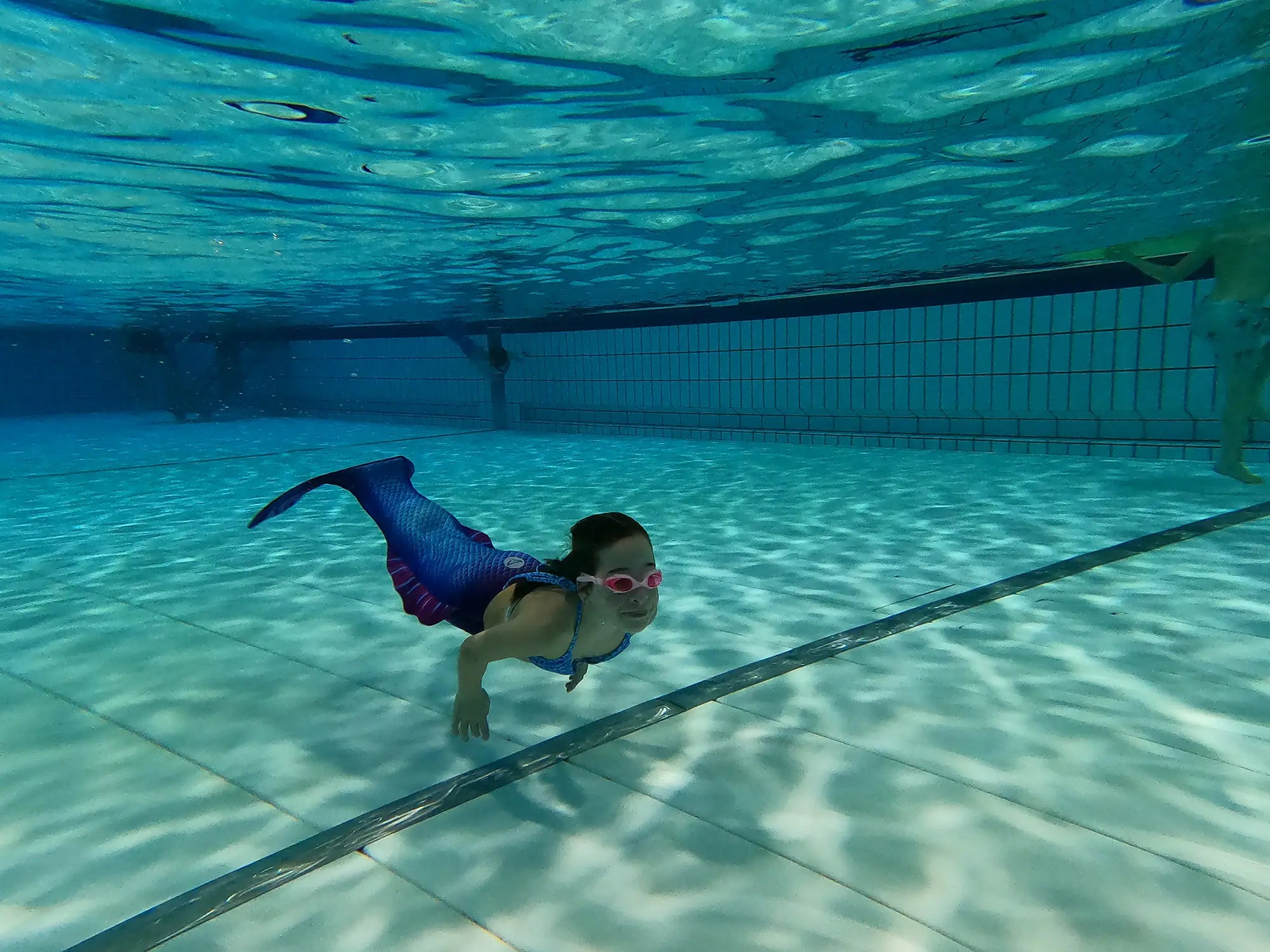Article: How to swim safely with a mermaid tail

How to swim safely with a mermaid tail
The magical experience of swimming like a real mermaid becomes a reality with the mermaid tails from Ocean Queens. It’s important to know how to use these tails to swim safely. In this blog, we’ll explain how to swim safely with the tail at all times and provide tips so you can enjoy your mermaid adventure safely.
Safe Mermaid Swimming
Mermaid swimming is safe if the tail is worn correctly and all safety regulations are followed. It’s recommended to take a mermaid swimming lesson if you’ve never done it before. These lessons will help you understand how it feels to swim with the tail.
During the lessons, you will learn how to put on the mermaid tail with a monofin easily. Additionally, you will learn how to swim like a real mermaid, using beautiful, flowing body movements. These lessons ensure that you know how to handle the tail in the water effectively.
Safety Regulations
There are several important safety guidelines to keep in mind:
- Mermaid tails are only suitable for individuals with at least swimming certificates A and B;
- Swimming with a tail should only be done under supervision;
- Practice putting on and taking off the mermaid tail in shallow water;
- Always avoid unsafe conditions, such as swimming in currents or choppy waters;
- Never run or hop with the tail on, as you could fall and damage the tail.
Why Safety is Important
Swimming with a mermaid tail can be challenging, especially if you’ve never done it before. The tail limits your leg movement in the water, which means you’ll need to swim differently than you’re used to. Without practicing the right techniques, swimming with a tail can be difficult. It’s essential to be aware that you need to swim differently than usual to be well-prepared before entering the water.
Choose the Right Material
It’s crucial to choose a high-quality mermaid tail. With more types of monofins available on the market, selecting the right quality is more important than ever. First and foremost, the material from which the fin is made is extremely important. It needs to provide both strength and flexibility. Additionally, the fin should fit snugly enough so that it doesn’t slip off your feet while swimming. Tails with a universal size are therefore not recommended.
Maintenance
In addition to choosing the right material, proper maintenance of the tail is also essential. A high-quality mermaid tail, like those from Ocean Queens, needs to be well-maintained. Try to avoid pushing off against the edge of the pool or the bottom as much as possible. While safety should always come first, it’s not beneficial for the tail’s longevity.
Rinse the tail with lukewarm water after each use. Chlorine in pools can reduce the elasticity of the tail, so it’s important to rinse it thoroughly after use.
Good for tail maintenance:
- Rinse the tail with lukewarm water after swimming;
- Hang the tail to allow it to drain and dry;
- Keep the monofin inside the tail.
Not good for tail maintenance:
- Don’t jump with the tail on rough surfaces like stone tiles, as this could cause holes in the fabric;
- Don’t use the tail in the sea, a hot tub, or a jacuzzi;
- Don’t wash it in the washing machine.
Step-by-Step Guide to Safe Mermaid Swimming
Here are the most important steps that describe how to swim safely as a mermaid:
1. Start Preparing on Dry Land
Before diving into the water, it’s important to prepare yourself on land first. Put on the mermaid tail with the monofin and try moving around. This helps you get used to the limited range of motion. This preparation gives you an idea of how it feels to move your legs together, similar to how you’ll swim with the tail.
2. Take a Mermaid Swimming Lesson
Many pools now offer special mermaid swimming lessons. These lessons teach you how to swim safely with a mermaid tail. You’ll not only learn the best ways to move, but also how to rescue yourself in case of an emergency.
3. Swim in Safe Water
The type of water you swim in greatly impacts safety. Swimming in a controlled environment, like a pool, is much safer than in open water. Pools are more manageable than the sea, and there are always people around to monitor safety. Currents and waves in the sea pose extra risks. Swimming in open water with a mermaid tail is always discouraged.
